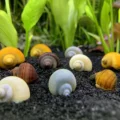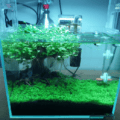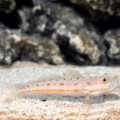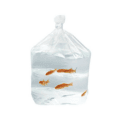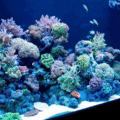Discover the best saltwater fish for a 5-gallon nano aquarium! From vibrant Trimma and Eviota gobies to the striking Flaming Prawn Goby, this guide offers 8 perfect stocking ideas. Learn how to maintain water quality, prevent evaporation issues, and create the ideal habitat for these small, beginner-friendly species!

When I was initially doing research for this post I got discouraged.
Most people in forums would say that there are no saltwater fish suitable for a small 5-gallon tank.
And then aquarists with actual experience and deep knowledge about nano tanks would chime in.
According to the experts, a 5-gallon aquarium can accommodate a combo of a single dwarf goby and a shrimp.
However, I’ve found that the best saltwater fish to put in such a tank are pygmy gobies from the Trimma and Eviota genera. These species grow to about 1″ and don’t swim much.
8 Saltwater Fish Ideas for Stocking a 5-Gallon Tank
When starting an aquarium, people usually keep it small until they know how well they can handle the new change.
After having previous experience with freshwater tanks and some limited space at home, I wanted to give a saltwater aquarium a try.
Due to the differences in care and lack of space, I knew that a smaller 5-gallon tank was the best option for me at the time.
At first, I was led to believe that there was nothing that would thrive in a saltwater nano tank.
However, with further research, I was able to find eight fish that can happily live in such a small space.
Take a look at the saltwater fish that are perfect for a 5-gallon nano aquarium:
1.Trimma gobies – Trimma spp.
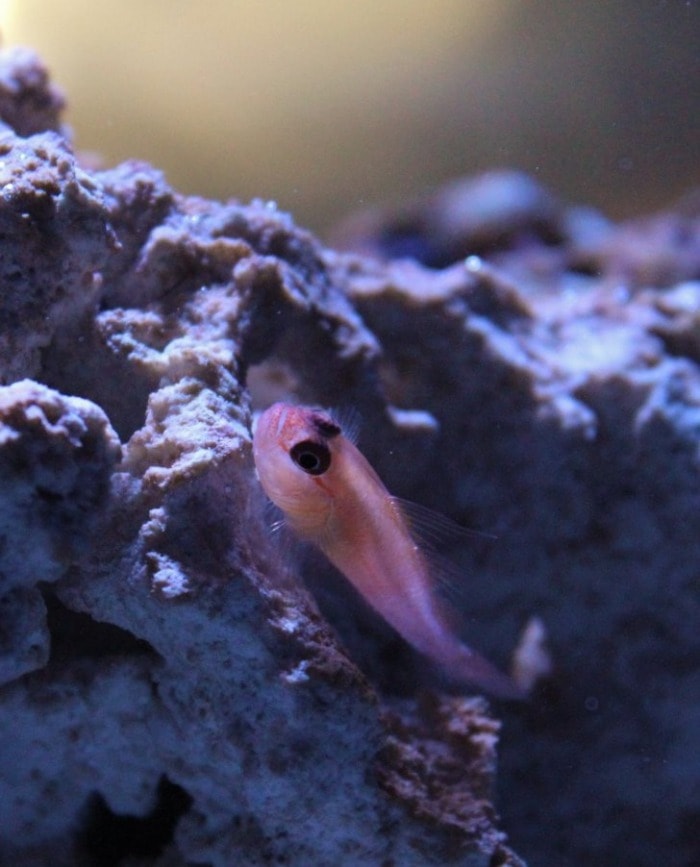
- Maximum adult size: 1 inch (2.54 cm)
- Suitable for beginners: Yes
- Reef safe: Yes
If you are looking for a gentle fish that is compatible with other species while being reef-safe, Trimma gobies are a perfect choice for you.
These slender little fish can have multiple colors on them ranging from red, orange, yellow, and more with piercing gold-rimmed eyes.
The Trimma goby is not big by any means; in fact, they are one of the smallest fish on this list at only 1 inch (2.54 cm) in size. This makes them one of the best options for anyone looking for potential stocking ideas for their 5-gallon tank.

An interesting behavior of Trimma spp. is that they like to dwell in deeper waters, which is typically considered unusual for nano fish.
Trimma gobies are typically found in the Southwestern Pacific ocean where they reside deep below the water’s surface near the reefs located on the bottom of the coast.
2. Eviota gobies – Eviota spp.

- Maximum adult size: 1 inch (2.54 cm)
- Suitable for beginners: Yes
- Reef safe: Yes
Eviota gobies come in a variety of species, and the majority of them are considered to be reef-safe.
Same as Trimma gobies, Eviota gobies also are among the smallest fish on this list at only 1 inch (2.4 cm) when fully grown, which is great when considering the size of a 5-gallon aquarium.
And as a disclaimer:
All the fish on the list can function in a 5-gallon saltwater tank, but the smaller the fish, the more you can house together.
Adult Eviota spp. have a transparent body with a horizontal red line going through its center with big watchful eyes that help track potential enemies.
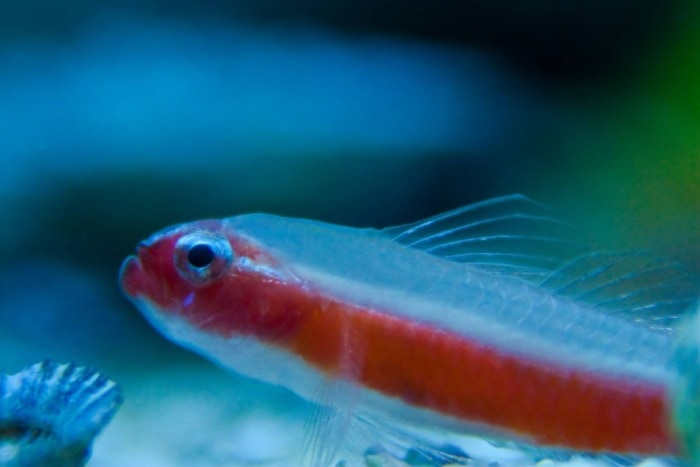
They are also peaceful in general, but their size makes them a little bit timid when having to face other fish in the tank.
For this reason you’d want to include some plants or other hiding places for your tiny Eviotas to feel more comfortable.
3. Clown Goby – Gobiodon okinawae
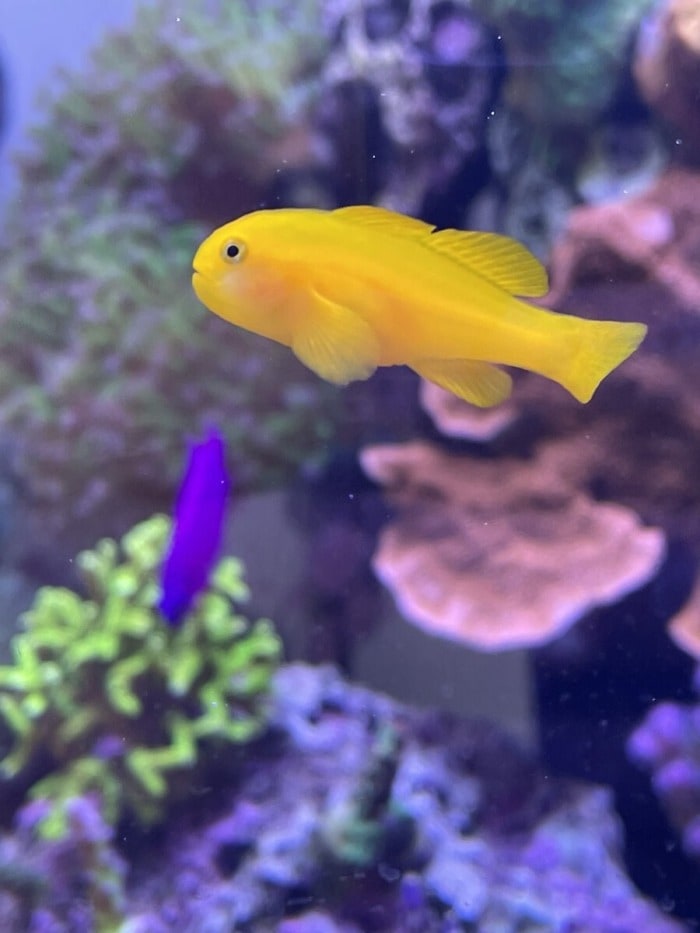
- Maximum adult size: 1.5 inches or 3.8 cm
- Suitable for beginners: Yes
- Reef safe: No
The stunning Clown Gobies are one of the brightest colored on my list and are super easy to spot in the tank thanks to their eye-catching yellow color.
Clown goby (Gobiodon okinawae) are naturally peaceful fish that get along with other members of the tank.
Clown Gobies like to have plants and decorations around for when they need time alone.
They are small at just 1.5 inches (3.8 cm) in their adult stages, which leaves room for other fish in a 5-gallon tank to cohabitate with them.
However, Clown Gobies aren’t the best choice for anyone planning to use stony polyp corals in their tank.
These fish tend to nip at such corals, so keep this in mind if you choose to house them together.
4. Flaming Prawn Goby – Discordipinna griessingeri

- Maximum adult size: 1 inch / 2.54 cm
- Suitable for beginners: Yes
- Reef safe: Yes
The Flaming Prawn Goby is a unique fish that is native to the Indo-pacific ocean and can be found hiding amongst the corals growing there.
This is another super tiny saltwater fish that reaches just 1 inch (2.54 cm) as its maximum size in adulthood. For this reason, Flaming Prawn Gobies are a perfect choice for a 5-gallon nano tank.
The gorgeous appearance of the Flaming Prawn Goby is one of my favorite things about it.
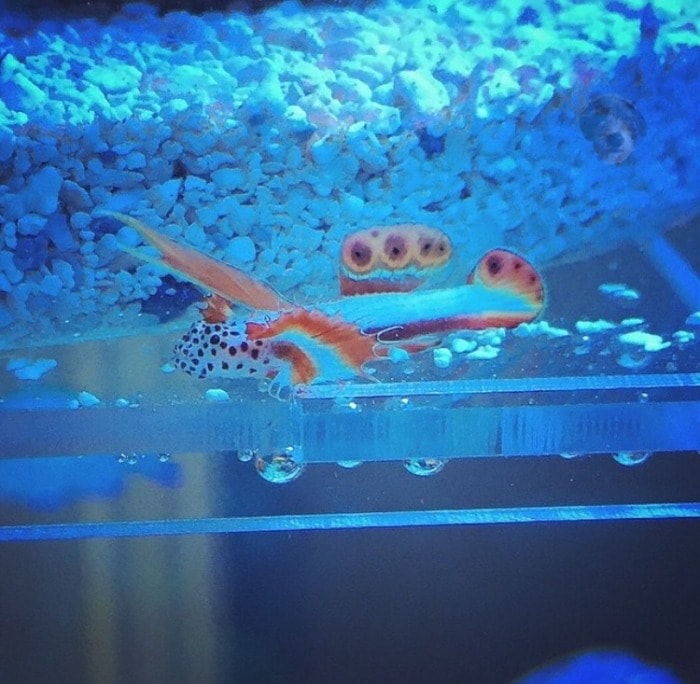
Typically, I’m not one to needlessly spit superlatives but this fish is just out of this world.
Flaming Prawn Gobies have interestingly shaped orange fins on them with a white body that has thin stripes of red and yellow.
This in effect makes them stand out in your 5-gallon tank even more.
Discordipinna griessingeri are also peaceful and will not disturb your coral or other residents of the aquarium.
5. Panamic Barnacle Blenny – Acanthemblemaria hancocki
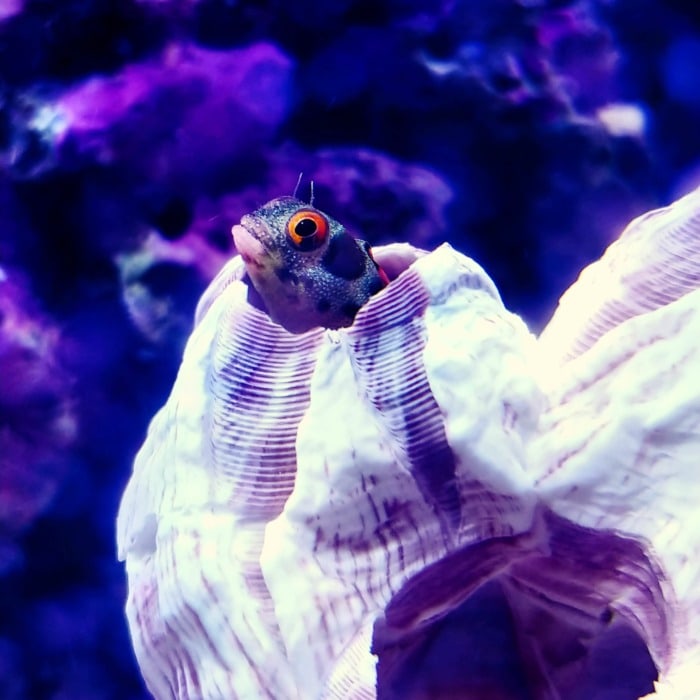
- Maximum adult size: 1.8 inches (4.5 cm)
- Suitable for beginners: Yes
- Reef safe: Yes
While most small fish tend to be more reserved when concerning their involvement in an aquarium, that is not the case for the Panamic Barnacle Blenny.
These tiny microfish grow to be about 1.8 inches (4.5 cm) and have appetites that I can only classify as surprising, to say the least.
Once you place food in the tank, sit back and watch how quickly Panamic Barnacle Blennies dash about to grab every morsel they see.
These fish have long, slender, spotted bodies that allow them to move quickly through the water and all of that is complemented with striking red eyes.
The Panamic Barnacle Blenny, which you can see labeled as Acanthemblemaria Hancocki at the fish store, also likes to perch and observe different parts of the tank.
My advice is to be sure to include some decorations for them to enjoy.
6. Yasha Goby – Stonogobiops yasha

- Maximum adult size: 2 inches (5.1 cm)
- Suitable for beginners: Yes
- Reef safe: Yes
The Yasha goby (Stonogobiops Yasha), is a on of the beautiful-looking fish with distinctive markings and vibrant colors available in the aquarium hobby.
The base color of this micro fish is milky white with horizontal lines of gold and orange that streak down its sides.
The Yasha goby is a peaceful, small species that grows to 2 inches (5.08 cm) of maximum body length. It prefers to be housed with other fish that share the same qualities.
These cute little fish have been known to be quite hardy too.
Yasha Gobies aren’t super common in the saltwater fish world so they might be pricey and hard to find.
However, that’s a shame since they are also reef-safe and beginner-friendly.
In my opinion, the Yasha goby is one of the best stocking options for a 5-gallon saltwater tank.
Author’s advice: This fish has a tendency to burrow, so include sandy substrate in the bottom of your tank to keep them happy. They’re not sand sifter gobies though, so don’t expect them to clean the substrate for you.
7. Hi Fin Goby – Stonogobiops xanthorhinica

- Maximum adult size: 2 inches (5.1 cm)
- Suitable for beginners: No
- Reef safe: Yes
The eye-catching bottom-dwelling Hi Fin Goby has a distinct yellow head with thick diagonal bands of black and white that trail down the body to the tail.
Its coloratoion weirdly resembles the freshwater Chinese High-Fin Banded Shark, which is part of the freshwater shark crew.
However, the latter grows to become a 50-inch giant whereas the former is an actual nano fish.
The Hi Fin Goby is about 2 inches (5.1 cm) at its biggest and it is typically found in deeper waters along the sandy banks.
Despite how cool this fish is, I wouldn’t necessarily recommend it for beginners in the saltwater aquarium hobby.
The diet of Stongobiops Xanthorhinica is fairly specific and can be hard to manage for people who are new to this.
However, Hi Fin Gobies are one of the dandiest fish on the list, so I would recommend them to anyone with the experience to care for them.
Author’s note: The Hi Fin goby is has a symbiotic relationship with pistol shrimp in the wild where the blind shrimp will maintain the burrow where both live while the goby watches for danger. To me, Goby-shrimp relationships have always been one of the coolest things I could set up in a home tank.
8. Green Banded Goby – Tigrigobius multifasciatus

- Maximum adult size: 2 inches (5.1 cm)
- Suitable for beginners: Yes
- Reef safe: Yes
The last fish on this list is the green-banded goby, less commonly known as Tigrigobius multifasciatus.
Green Banded Gobies are usually found in places like the Bahamas and Central America swimming between the different structures of the reef.
In general, Green-Banded Gobies are safe for reef tanks and keep it friendly with other fish. However, they tend to be a bit territorial with their own kind, so keep them in bonded pairs or by themselves.
Green-banded gobies are only 2 in (5.1 cm) in length, so they can live in a 5-gallon tank with no problem.
Also, the look of these fish and how colorful they become with time is probably one of their coolest features.
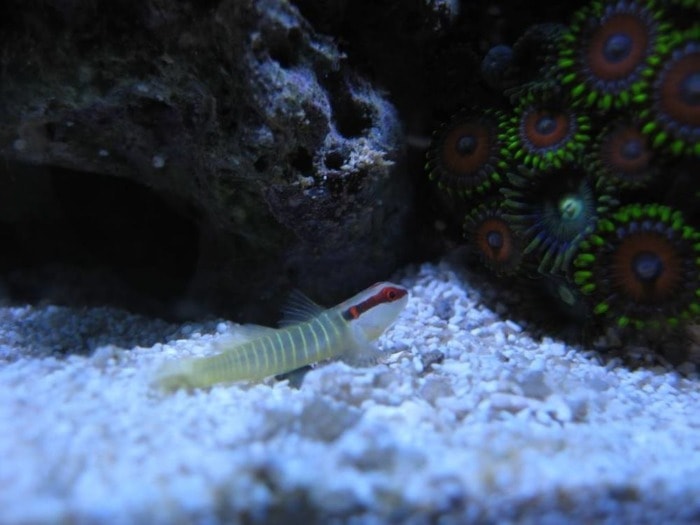
They are green with thin light green lines going vertically down their sides.
Plus they have a red stripe that goes across their eyes and, to me at least, makes them look like a bandit in disguise.
If you’re into very colorful saltwater fish I recommend going over this article.
Don’t Keep Clownfish in a 5-Gallon Aquarium
I can definitely understand the desire to have a clownfish in a 5-gallon nano tank, but this isn’t the best option for several reasons.
For starters, Clownfish need to be housed in at least 10 gallons or more to live long and well.
Also, clownfish have been known to kill and eat other fish if they feel the need to compete for space, which they would absolutely do in a 5-gallon tank.
If you’d like to keep a clownfish, research the different varieties and curate your setup accordingly.
Aside from a clownfish, a 10-gallon tank can accommodate:
- Jester Gobies
- Yellow-Striped Cardinalfish
- Possum Wrasses
…And more which you can check in my article about stocking ideas for a 10-gallon saltwater tank.
If you by any chance decide to move to the 20-gallon aquarium brackets you could also keep:
- The amazing Firefish goby
- Yellow damselfish
- Gumdrop Coral Croucher
…And many more which you can skim through in my article about saltwater fish ideas for a 20-gallon aquarium.
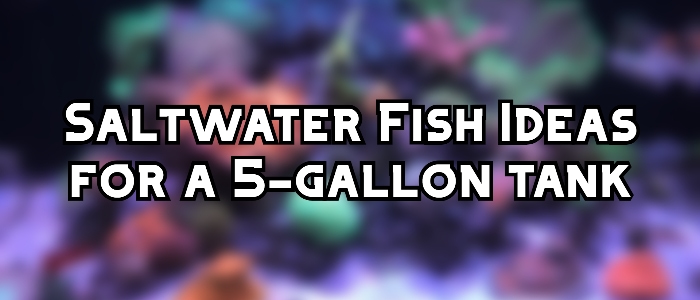
Water Evaporation is Your Biggest Issue With a 5-Gallon Saltwater Tank
The smaller the fish tank, the quicker its total water will decrease.
The evaporating water will change the mineral and vitamin density of the water inside the fish tank, which can affect fish negatively.
Smaller quantities of water also get polluted more easily.
This is typically well-mitigated in larger tanks but with a 5-gallon one it will be very noticeable.
Within aquariums water evaporation is mainly caused by heat from either the weather, the heater itself or by lighting strong enough to support coral growth.
This obviously doesn’t mean to keep your fish cold just to avoid water evaporating.
You will have to make sure the water levels are being maintained every day or every other day at most.
Distilled water is good for topping off a saltwater aquarium that has lost some water to evaporation.
And although this may seem obvious to some:
Distilled water should never be used for water changes! Just top offs to correct evaporation.
You may be interested in checking: How to make saltwater for a home aquarium?


